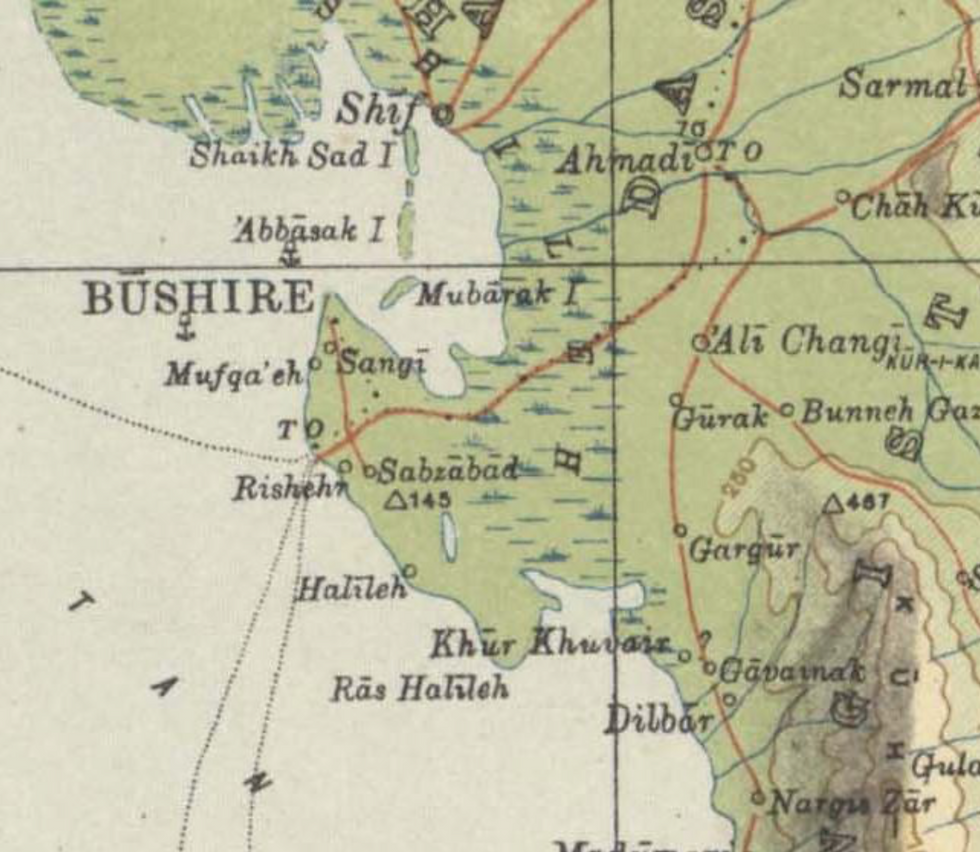Occupation of Bushehr & Landings at Delvar Iran
- Si Biggs

- Aug 12, 2023
- 4 min read
Updated: Aug 25, 2025
Unit/ Formation: Royal Marines
Location: Iran
Period/ Conflict: World War I
Year: 1915
Date/s: 8th August to 16th October 1915
Bushire was used as a base by the British Royal Navy in the late 18th century. In the 19th century, Bushehr became an important commercial port.

It was occupied by British forces in 1856, during the Anglo-Persian War of 1856–1857. Bushehr surrendered to the British on 9 December 1856. It was occupied again by the British in 1915, the second time due to German intrigue, Rais Ali Delvari (independence fighter and anti-British colonialism activist) and Wassmuss of the Germany Intelligence Bureau were busy formulating a general Anti-British uprising in Persia.

On 12 July 1915, Rais Ali and Tangestani's attacked the British residency in Bushehr but they were relapsed, on 8 August 1915 the British forces occupied Bushehr with five hundred more Anglo-Indian cavalrymen.
The occupation lasted from 8 August to 16 October, when it was terminated by agreement with the Persian government. [1]
On August 9 it was decided to send elements from four companies of the 96th Berar Infantry (70 rifles from each) to land at Dilwar (Delvar?), along with Royal Navy elements, a Royal Marine covering force and a Navy demolition team.

The 96th was under the command of Major C.E.H. Wintle, and the force was accompanied by the Royal Navy's HMS Juno under the aforementioned Captain Wake, along with the HMS Pyramus and the Royal Indian Marine ships HMIMS Dalhousie and HMIMS Lawrence as troopshipsalong with a Naval Landing Party of about 100 men. After the landings the ships would seek to seize any Tangistani dhows in the Gulf.

The ships arrived off Dilwar on the morning of August 10, but they discovered the survey of the coast previously made was unreliable and they had to seek safe anchorages; also a shamal wind was blowing, preventing landings. This continued on the 11th, though in the interim they were able to do reconnaissance and practice landing operations.
The landing finally became feasible on August 13 and operations began at 9:30 AM. The tides forced a landing to the south of the original plan. The Tangistanis were in trenches onshore and opened fire with rifles, and Juno's landing boat lost four dead and seven wounded.
The small boats had Maxim guns, and tried to suppress the rifle fire, but it was the six-inch guns on Juno, firing from 9,000 yards offshore, that had the most effect,
Due to considerations of light, it was decided to land he troops at 11 AM. Once the Royal Marines were ashore the infantry landings began.
The British did not have good maps of the area, and thought the villages of Old Dilwar and New Dilwar and its fort lay just beyond a palm grove. At 3:30 on the morning of August 14, Wintle ordered his troops forward to the palm grove, only to discover, as the maps a left show, that it lay some 1200 yards south of the villages.

Wintle's men in the grove began cutting down palm trees to punish the Tangistanis, but encountered resistance (as well as an instance when naval gunfire fell on the grove). After taking casualties, Wintle withdrew toward the British camp, but resolved to take the fort the next day.
At 3:30 in the morning of the 15th, to avoid the heat of the day in the Gulf in August, Wintle moved out and took he village of Old Dilwar, stationing a company and a machine-gun there, and moving on to New Dilwar and its fort. It was discovered that the Tangistanis expecting him to return to the palm grove to cut down more trees,had reinforced the palm grove. The British were able to breach the walls of the fort. Wintle blew up the fort and burned the village of Dilwar.
At the time of the landings, Wintle estimated the hostile forces at Dilwar at 150-200 men, but by late on the 15th at 500 to 600, suggesting that reinforcement had come from other villages in the vicinity. He also makes reference to seeing a "white officer," who he suggested might be a Turk, with the enemy.

Wintle was planning to return and destroy more palm trees, but due to a shortage of ammunition and naval shells and the growing enemy force, along with growing dissent among the local population back in Bushire, it was decided to order the force back to Bushire, considering the destruction of the fort and the village sufficient punishment to the Tangistanis, and the punitive force re-embarked that night.

Casualties were: Killed: Royal Navy: 1 officer, 5 seamen, 1 Royal Marine; 96th Berar Infantry: 1 Indian officer, 7 sepoys. Wounded: Royal Navy: 1 officer, 12 seamen and 12 Marines; 96th Berar Infantry: 1 Indian officer and 14 sepoys. As noted earlier, some casualties were from friendly fire when the Navy shells fell at the palm grove.
This was not the end of the campaign. The Tangistanis would attack Bushire itself again on September 9. [2]
References:
[1] Various sources
[2] A BLOG BY THE EDITOR OF THE MIDDLE EAST JOURNAL - Gunboat Diplomacy: The British Occupy Bushehr (Bushire) and Move Against the Tangistanis, August 1915, Part II




Comments